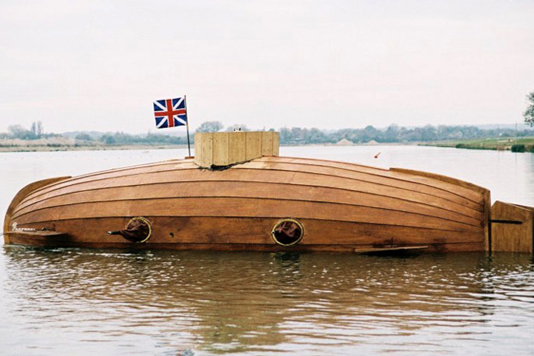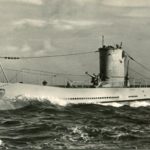From the earliest days of sail, ancient civilizations dreamed of a vessel that could carry sailors underwater to unlock the ocean’s mysteries and, not surprisingly, to attack enemy ships by surprise. Over centuries many ideas were committed to paper, but none proved practical when brought to life.
The first successful submarine was developed by a Dutch inventor, Cornelius Drebbel, working for the King of England. Drebbel tested his wooden ship in the early 17th century on the River Thames. Powered by oars, the craft could submerge and surface at will and could remain underwater for up to three hours with the help of snorkel-like tubes. While Drebbel’s design validated the concept of the submarine, the world would wait another 250 years for advances in science and technology to begin to unlock its full potential.
A German-American engineer built the first modern submarine in 1866 for the Pacific Pearl Co. The “Sub Marine Explorer” could reach a depth of 100 feet, used compressed air to equalize pressure on the hull, and maneuvered underwater with a hand-powered propeller. Unfamiliarity with “decompression sickness” (known today as “the bends”) and overfishing the pearl beds off Panama’s coast led to the craft being abandoned three years later.
Across the Atlantic, the same year the Sub Marine Explorer made its maiden voyage, the first modern, self-propelled torpedo was designed in England. Powered by compressed air, the torpedo could travel eight miles per hour and reliably strike a target at 700 yards, potentially making the submarine a more viable weapon of war.
Submarines and torpedoes came together in the 1880’s. Incorporating design advances from French and Spanish engineers, the Nordenfelt IV, built by a Swedish industrialist, was armed with two torpedoes. The 100-ton, twin screw vessel was powered by steam on the surface and propelled underwater by pressure built up when the engine ran on the surface. Nevertheless, technical problems remained – chief among them was need for a source of long-distance underwater propulsion.
The most promising answer to the propulsion question appeared to be electric motors. In 1884 a Polish-Russian engineer successfully tested a battery-driven one-horsepower motor in a submerged boat in the Neva River. But the limitations of early batteries restricted the submarine’s range underwater and failed to attract the support of naval officials in Europe and the Americas. Yet each subsequent design added new innovations (i.e. periscope, hydroplanes, electric gyroscope) that would prove indispensable with the development of the modern submarine at the dawn of the 20th century.
In my next blog, the submarine becomes a devastating new weapon of war.






